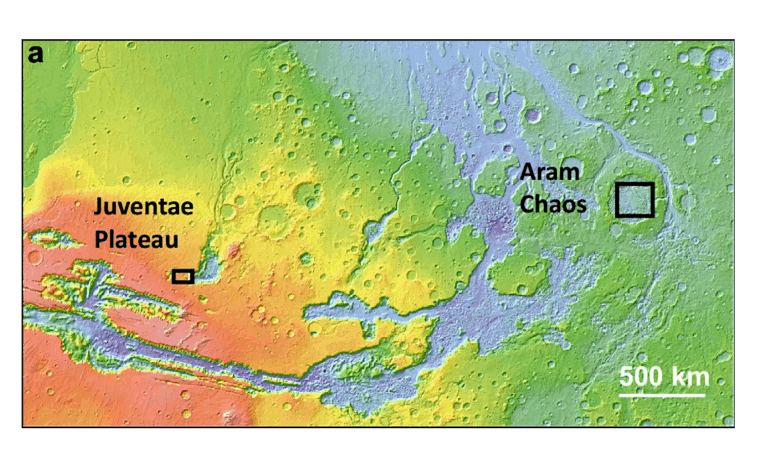Researchers Uncover Ferric Hydroxysulfate on Mars, Revealing Geochemical Insights

The discovery of ferric hydroxysulfate, a unique iron-sulfate mineral, on Mars has provided new insights into the planet’s geochemical history. Researchers have identified this unusual phase, known scientifically as Fe 3 +SO 4 OH, which exhibits distinct spectral bands not found in any previously known minerals. The detection marks a significant milestone in understanding the processes that shaped the Martian surface and its layered sedimentary rocks.
Ferric hydroxysulfate is believed to form through specific geological conditions. According to research published in the journal Nature, this crystalline compound likely results from heating hydrous Fe 2 + sulfates to temperatures of at least 100 °C. The spectral signature of ferric hydroxysulfate, particularly a strong band at 2.236 μm, has been observed in regions on Mars, including Aram Chaos and the plateau above Juventae Chasma.
Geochemical Processes and Historical Context
At these Martian locations, the presence of hydrated sulfates suggests they formed through evaporative processes or low-temperature alterations. In contrast, the formation of Fe 3 +SO 4 OH aligns more closely with the heating and oxidation of hydrated ferrous sulfates. This transition may have resulted from volcanic activity, ash deposits, or hydrothermal processes that altered the mineral composition of the region.
The research team utilized data from the Mars Orbital LASER Altimeter (MOLA) to create detailed topographical maps of the Martian equator. These maps highlight key areas, with black boxes marking the Juventae Plateau and Aram Chaos. The elevation changes are visually represented, indicating where ferric hydroxysulfate is likely concentrated.
The study also employed the Compact Reconnaissance Imaging Spectrometer for Mars (CRISM) to analyze compositional units in the area. The findings reveal pyroxene-bearing basalt, polyhydrated sulfates, and the ferric hydroxysulfate-bearing phase, showcasing the complex geological history of Mars.
Implications for Martian Research
The implications of detecting ferric hydroxysulfate extend beyond mere mineralogy. Understanding the geochemical environment that supports the formation of such minerals may offer clues about past conditions on Mars, including the planet’s potential habitability. The layered sedimentary rocks containing these minerals provide a window into the ancient processes that influenced Mars’ climate and surface conditions.
As exploration continues, this discovery reinforces the importance of ongoing research into Mars’ geological history. The unique properties of ferric hydroxysulfate and its formation conditions could lead to further insights into the planet’s evolution and the potential for life.
In conclusion, the detection of ferric hydroxysulfate on Mars not only adds to the understanding of the planet’s geological past but also highlights the dynamic processes that have shaped its environment. Continued studies using advanced imaging and spectrometry techniques will likely unveil more secrets of the Martian landscape, contributing to the broader quest for knowledge of our neighboring planet.






